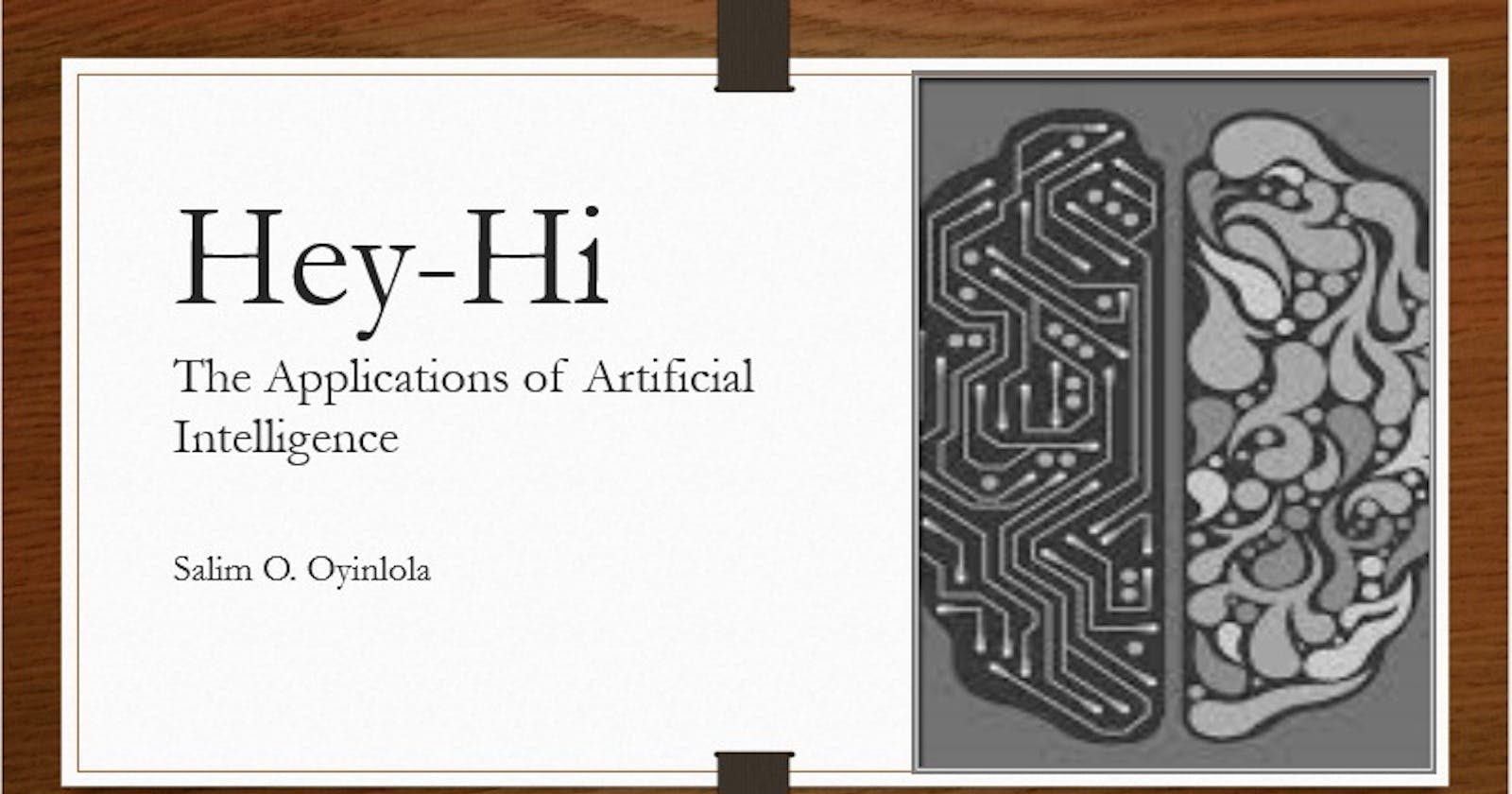Hey-Hi: Artificial Intelligence in Medicine
With each passing year, healthcare, like every other field, becomes increasingly dependent on technology.
I chose to start the Hey-Hi writing series on the immense applications of artificial intelligence in a plethora of fields with medicine because I don’t believe there is a field that would benefit from artificial intelligence as much as the medical field. With AI in medicine, engineers get to see their expertise realized in a very positive way – where they can really see it make a difference to patients in a way they cannot see in other fields. With each passing year, healthcare, like every other field, becomes increasingly dependent on technology, and the safe and effective advancement of this technology in turn, depends on the work of biomedical engineers. From wearable trackers to mental health chatbot to AI-based cancer screening to genetic engineering, now more than ever, the work of biomedical engineers is more important than ever.
For decades, science fiction authors and movie makers alike have been predicting the amazing (and sometimes catastrophic) changes that will arise with the advent of widespread artificial intelligence. In the 2010s, AI had not made any such crazy waves but now, in many ways, it has quietly become ubiquitous in numerous aspects of our daily lives. As the shape of the 2020s is increasingly defined by the coronavirus pandemic, artificial intelligence and by extension, digitalization has shown that it is like a ship loaded with tech advancements that has a huge capacity for transforming mankind’s combat against infectious disease but it was still moored safely in harbor, at least until the pandemic. Overall, there is a general sense of transformation, innovation and connection that seems to be happening across the healthcare industry. Some of it occurred before the spread of COVID-19, but overall, the coronavirus was the catalyst that accelerated the process.
Given that diagnosing diseases precisely is the cornerstone of healthcare, it is worthy of note that the biggest area of application for artificial intelligence in the healthcare context is digital diagnosis. Machine learning, a subset of artificial intelligence, can detect patterns of certain diseases within patient electronic healthcare records and inform clinicians of any anomalies. In this sense, the artificial intelligence technique can be compared to a second pair of eyes that can evaluate patient health based on the knowledge extracted from big datasets by summarizing millions of observations of diseases that a patient could possibly have. The Andrew Ng Machine Learning course under Stanford University is one that could be considered the Machine Learning beginner starter pack. There is hardly a machine learning enthusiast I have had the pleasure of meeting who hasn’t taken the course. A common example of digital diagnosis is mentioned in this course and other beginner Machine Learning courses alike. The machine learning model in question is able to use publicly available datasets on breast cancer to determine if the tumors in a woman’s breast are either benign (non-cancerous) or malignant (cancerous).
Furthermore, machine learning models help oncologists detect the disease at its earliest stages. In Pathology, artificial intelligence comes in handy in improving the precision of blood and culture analysis using automated tissue and cell quantification and helps improve healthcare professionals’ productivity by increasing the speed of profile scanning. In dermatology, artificial intelligence algorithms are used to pinpoint biological markers for acne, nail fungus, and seborrheic dermatitis hence, improving clinical decision-making and ensuring the accuracy of skin disease diagnoses. Neurology and neuroscience also benefits from implementing artificial intelligence in stroke prediction and recovery monitoring. In eye care, AI-driven vision screening programs that help provide a point-of-care medical diagnosis based on machine learning for Ophthalmological conditions are gaining more ground.
“Within that handful of high quality studies, we found that deep learning could indeed detect diseases ranging from cancers to eye diseases as accurately as health professionals. But it’s important to note that AI did not substantially outperform human diagnosis.” - Prof. Alastair Denniston
However, given that mental disorders are the fourth leading cause of disability in people aged 15 to 44 years, the most interesting application in my opinion is in the mental health domain. As with anything artificial intelligence, the potential of the applications of AI in the mental health space is way more promising than the advances already made. Some of the top applications of innovative technologies in the mental health space include;
• Personalized cognitive behavior therapy (CBT) fueled by chatbots and virtual therapists.
• Mental disease prevention by creating machine learning tools that help high-risk groups avoid social isolation.
• Identifying groups with a high risk of suicide and providing them with support and assistance.
• Early detection of mental disorders using machine learning and data science: diagnosing clinical depression, bipolar disorder, anxiety and more.
In conclusion, The 2020’s may turn out to be the decade when digital technology reshapes the health system and thankfully, COVID-19 has driven many developments, as the digital health community continues to navigate how best to bolster classic public health measures. In the 2020’s, what we will see is increasing autonomy and independence of Artificial Intelligence where it can now work alongside a clinician with a higher level of independence. We will continue to see progressive autonomy with rigorous and thoughtful development and testing for safety and efficacy.

